The cold winter air of Nagoya greeted us as we stepped out of the airport. It is a cold Monday morning of 6 degrees Celsius. We have just arrived at the new Nagoya airport built entirely on reclaimed land by the sea.

Our Japanese colleague cheerfully welcomed us to Japan. The journey to Komaki was uneventful; agricultural plots line the landscape with industrial buildings dotting the side of the high way occasionally. My nihongo sensei mentioned that there is nothing much in Nagoya and that is quite true indeed. The toll charges for the 1 hour journey came up to 3000 Yen in all; exorbitant by international standards. Upon arriving in Komaki, we got down to business right away.
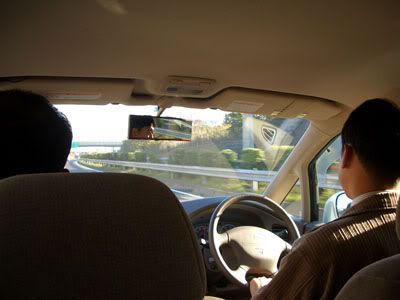
The sun started to recede from the sky line as early as 4pm (Japanese time). A few snapshots were taken against the backdrop of the Shinkansen line.
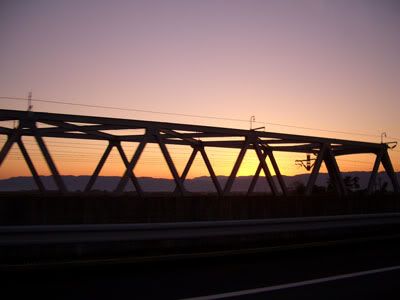
We arrived at Shiga 2 hours later into the bitter cold of the evening at 6pm. It is totally dark by then. Our second treat to Japanese fare for the day in the dormitory. A standard Japanese meal 3 times a day consists of rice, tofu, miso soup and fish. Though there are occasions where we can opt for curry rice instead of the plain Japanese rice.

The dorm room is small but serves its purpose of providing a night’s rest. There were little distractions from television (which has nothing on it and all the channels except one is in Japanese) and there is also no internet. Upon opening my fridge, viola!! A beer can is presented to the current occupant of the room. I’m not entirely keen on emptying its content, so it is left in the same place as it is for the next 4 days.

Day 2
Here we are back in the morning cold with Japanese fare for breakfast.

The journey to work takes around 10 minutes in all. A high school is situated next to our dorm; and thus schools of adolescent tend to travel in the direction opposite to where we are going every morning. It is observed that most of the students actually cycle to school. There will be a teacher dressed in business suit keeping a lookout for traffic and greeting every student at the entrance to the school.

I have noticed a Torii gate at the entrance to the workplace and decided to take a quick snap of it. The Japanese culture is steeped in its unique Shinto-Buddhism conglomerate. I guess behind the Torii gate is their Shinto shrine, similar to the one I have seen in the Komaki office.
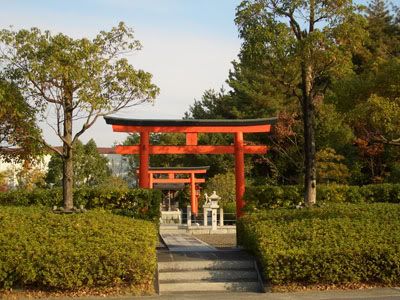
Day 3
Today is Thanksgiving Day in Japan with a sizable population enjoying their holiday away from work. Though there are always people who return back to office on this day. We are one group of them who have to be back in office.
As the main canteen is closed in our workplace, we have to journey out for our lunch. We stopped by a Raimein house which dispenses food coupons from a vending machine. Most of the transactions in Japan go by the vending machine. The same is true for the smart card used in our company’s canteen.
We had the opportunity to do some light shopping in the evening at the nearest departmental store which is 30 minutes by car away. Japanese electronics are expensive as compared to Singapore electronics. But the undisputed king of bargains is in Taiwan. The Japanese have their 100 Yen shop where everything in it cost a 100 Yen. It is an ideal place for the purchase of snacks, cup noodles and other miscellaneous stuff.
Fruits are not part of the main Japanese diets as they are expensive. Almost all of their fruits are imported, with bananas coming in from the Philippines. I bought a bundle of bananas and a bag of oranges and it comes up to 700 Yen.
Day 4
We left the office extremely late in the evening, way past the designated timing for the dormitory dinner. Our fellow Japanese colleague decided to bring us to a local Okunomiyagi house. It is a small cozy, pleasant food house by the road which serves Teppanyaki and other Japanese food.
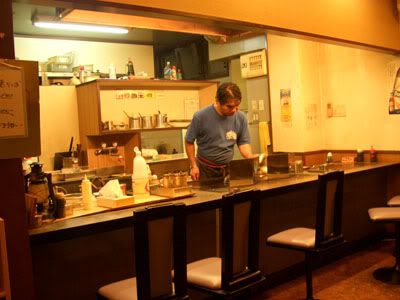
A few glasses of cold beer helped smooth our weary bodies and warmth the heart. Thereafter the food feast begins. First come a mix of Japanese vegetables and seafood followed by the main highlight of the day – Okunomiyaki [Japanese Pizza]. The one above is Okunomiyaki prepared Hiroshima style, which is largely noodles dipped in bbq sauce. The meal rounded off with Fried noodles, Japanese style.
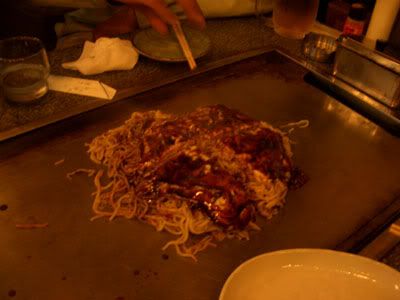
Day 5
Today is officially our last active day in Japan with the next day flying off from Komaki airport. Some photos from Shiga:


The samurai above is placed in the middle of an enchanting Japanese garden. There is also this unique structure which we are not sure what it is when we travel between our workplace. Some more pictures from the garden, it is actually coming to the close of autumn now and the leaves are dropping:

This is how a typical Japanese office looks like below where there are minimal barriers between the fellow workers. It helps build a strong communal spirit amongst all of them:

We traveled back to the Komaki office for dinner with our fellow Japanese colleagues. It is another food feast for the night. We were treated to a vast cuisine of Japanese delicacy with one of them being raw Tako (octopus) and raw fish. There is also the deep sea fish which they mentioned, and so on…

Thereafter we were brought to the nearest Eki (station) where we make our final journey in Japan to our accommodations. Our journey on the Densha cost 1210 Yen per person from Inuyama to Nagoya Airport:
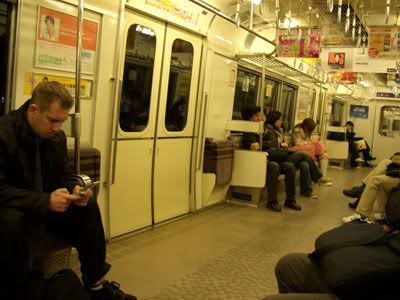
We checked into the airport hotel where a warm room with high speed Internet access greeted us at last:

One other noteworthy observation is that Japanese toilet seats are always warm. No matter how cold the surroundings are, the seat will always remain warm, courtesy of Japanese ingenuity. They also have a remarkable system where toilet users need not use toilet paper at all and a machine takes care of all that like the one below.
